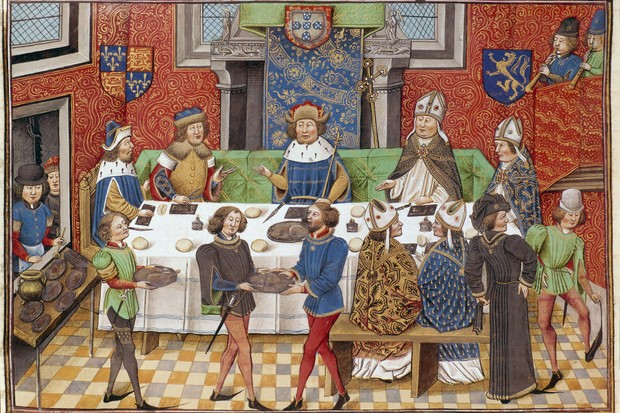
One type of history which is often overlooked is the realm of food history in Ireland. We’ve actually covered food before, in the eighteenth century when exoticism and sugar were king. What about what came before though? The traditional Irish diet rather famously consisted heavily of potatoes, much to our ruin over the course of our history. However, potatoes only arrived in 1589 and there were many centuries of Irish food before that – so just what exactly did our ancestors here in Waterford eat?

Unfortunately there are very few records from Medieval Ireland which discuss the food that they would have eaten – all too often the things we fail to record about our lives for future study are the things as basic and second-nature as eating. Recipe books of course did not emerge until the eighteenth century so most of our knowledge comes from a small handful of written medieval sources as well as archaeological evidence they’ve left behind.
As far as we can tell from the exhaustive research of historians like A. T. Lucas, the Medieval Irish, particularly in the earlier half of the period, lived on a diet rich in dairy, grains and seasonal additions. Meat was secondary as dairy conveniently provided the protein and fats vital to daily nutrition. In fact, dairy made up the broad bulk of their diet mixed with grains to create a type of porridge that was calorie dense and nutritious. Every form of dairy and its by products were consumed, from milk, cream, butter and cheese to curds and whey.
Due to the nature of life in that period milk was usually drunk when soured and in some cases was ‘very thick […] the swallowing of which [needed] chewing’. Fermented cream was used to make butter and cheese and curds would also make up important parts of the medieval Irish diet. Grains included oats barley and wheat which could be used for porridge, gruel or bread. Fruits and vegetable would have been more limited by the season and location than they are today but common favourites included apples, blackberries, onions, shamrock and peas.
n
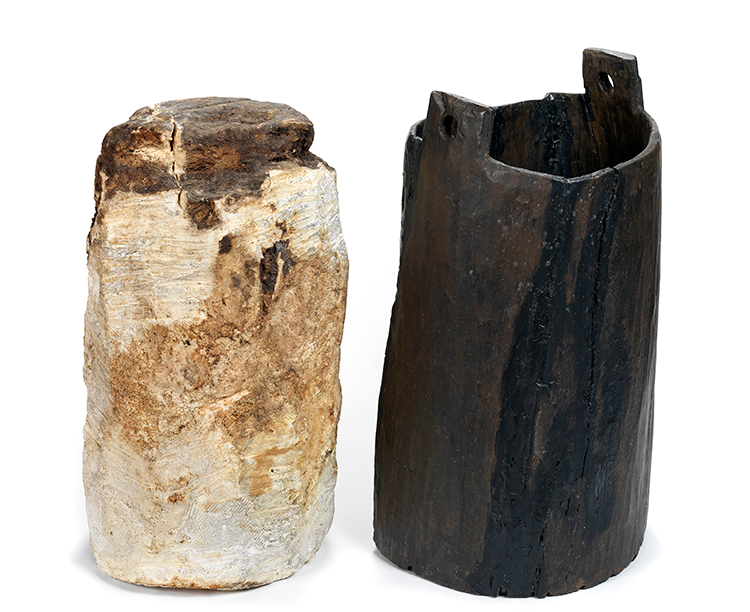
One of the most important products on offer was butter. As many of you probably know already, butter has been pulled from bogs across the country which can date back as far as the bronze age. Before the invention of the fridge, bogs provided an ideal means of food preservation thanks to their low temperature and low oxygen environment. Hundreds of these ‘bog butter’ samples have been found proving that for 3500 years butter has been central to the Irish diet. Most of the butter eaten would have been unsalted and unsweetened, closer to modern ripened cream butter and different types were eaten by all classes in medieval society depending on availability. Butter was at once a luxury and an important product eaten by most people to flavour food and was believed to ensure better health.
So what about the occasional sweet treat? Well we’ve covered the importance of honey in medieval Ireland before, which you can check out here. Honey was such an important commodity that there were special laws governing beekeeping known as the bechbretha which governed where bees could ‘graze’ and even what to do in the case of a bee sting. Honey itself was an extremely important ingredient used in both food and medicine. Any household which was able to would have kept a beehive but there was also a hierarchy for food and one law stated: ‘salt butter to the sons of inferior grades; fresh butter to the sons of chieftains; honey to the sons of kings’. Honey could be eaten by itself or used to sweeten other dishes much as it can today. Of course fruits could also be considered a treat and there is some evidence that wild cherries were cultivated to some extent in Ireland before the seventeenth century.
One of the best sources we have for all of this information is Aislinge Mac Conglie – The Vision of Mac Conglie a medieval parody of religious vision texts which features a tale of overcoming gluttony through the imagining of an entire world made of food.
The fort we reached was beautiful,
n
With works of custards thick,
n
Beyond the loch.
n
New butter was the bridge in front,
n
The rubble dyke was wheaten white,
n
Bacon the palisade.
[…]
n
The door of it was dry meat,
n
The threshold was bare bread,
n
cheese-curds the sides.
Smooth pillars of old cheese,
n
And sappy bacon props
n
Alternate ranged;
n
Fine beams of mellow cream,
n
White rafters – real curds,
n
Kept up the house.
This may have been a dream in the eleventh and twelfth centuries, though for many of us today I’m afraid it may represent more of a nightmare. It is easy to see from this small extract though, the importance that dairy or ‘whitemeats’ held in the medieval Irish diet. Visitors to the country throughout the medieval period were consistently surprised by the importance that dairy held in the Irish diet, particularly since meat was often secondary.
n
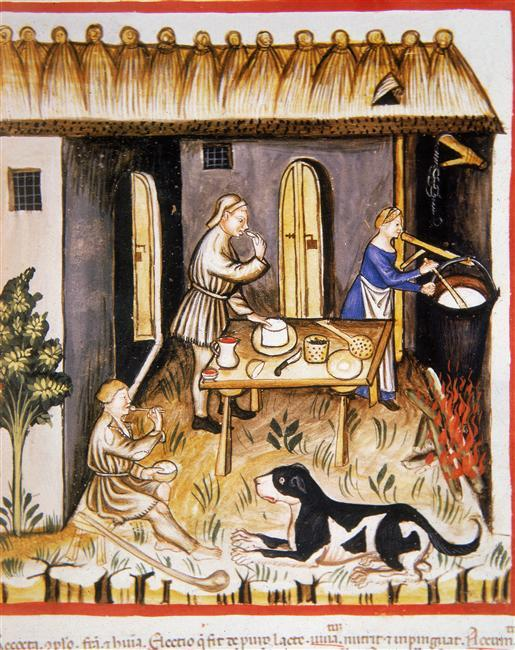
And what about a cheeky takeaway? Believe it or not they had those too, however they weren’t quite the same as the modern iteration. Cooking itself could be something of a luxury as even the cheapest dishes – like pottage, a sort of stew made of vegetables and grains boiled together – needed a pot and such to cook with. For those who couldn’t afford these basics they could avail of takeaway pies and stews prepared in specialist shops. They weren’t exactly luxury fare though and according to records from Kilkey, may have been made with ingredients unfit for human consumption, requiring the passing of local ordnances in the fourteenth century to protect the health of citizens.
Dining itself of course was quite the event. During the medieval period, dining was sometimes quite a chaotic affair, with the entire household sitting down together in the great hall of a castle or manor house. Here everyone from the lord of the manor to the servants would sit at long trestle tables and eat together with a minimum of fuss. Forks were unknown and much of the eating was done with a knife or spoon and of course with the fingers. Even in the Middle Ages however there were simple rules to be followed. In the 1380s for example diners were advised not to clean their fingers on the table cloth after blowing their nose and if someone wished to spit the advice was ‘do it behind you, never on the table or on anyone else’.
n
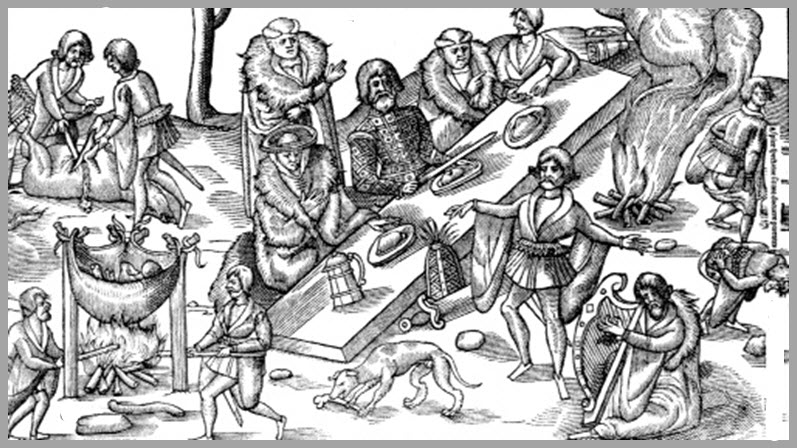
Here in Waterford people probably largely stuck to a standard diet of grains, milk and porridges along with seasonal fruits and vegetables. However they seem to have also eaten meat as evidenced from the animal bones found throughout the excavations in the city. Among the bones were some unusual examples including a horse skull which showed signs of butchering alongside cow bones. As well as this several dog skeletons which had clearly been killed for food rather than dying of natural causes were discovered. It is not known if they were eaten in times of hardship or if it was common practice in the city but forever whatever reason cats seem to have suffered the same fate less than their canine counterparts.
n
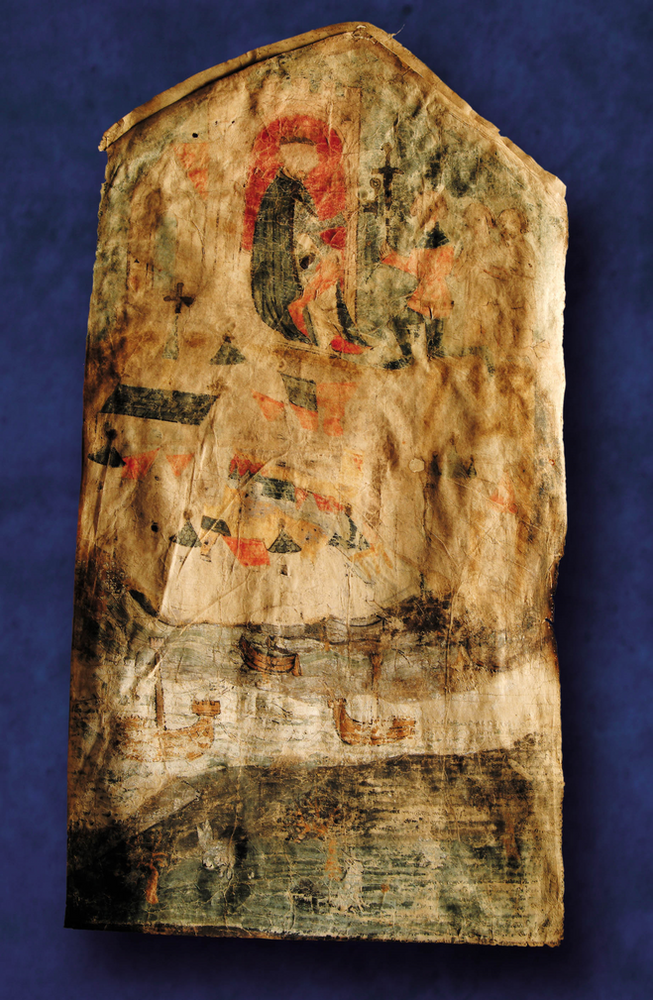
Our ancestors also seem to have enjoyed seafood and shellfish as evidenced by the abundance of oyster shells and other material discovered. Coastal area in Ireland would certainly have historically eaten more seafood of course than inland areas with salmon and eel among the most popular choices. The fruits and vegetables in their diet are less clear. Very interestingly, according to researchers who have seen medieval shipping records for the city, Waterford occasionally received shipments of peaches during the Middle Ages – a definite suggestion that the city was enjoying an unusual level of wealth.
Everything changed in the diets of ordinary people in Ireland with the arrival of the potato. This new food, brought back from the Americas, was cheap to produce, calorie rich and dense enough to keep anyone full. Slowly more and more people changed over to the potato and left their dairy rich seasonal diet behind. Recent evidence actually suggests that Bronze Age Irish people were almost as tall as modern Irish people thanks to their nutritious diets but the arrival of the potato clearly had a negative impact on the dietary health on the island. So, there’s something to be said for expired milk and dodgy takeaways after all!


